|
I’m staring into the face of an emu. I hadn’t realised it was standing right by me until I heard its ruffle and shuffle. I only pulled over to snap an unusually glass-flat Backstairs Passage with Kangaroo Island’s kyphotic spine stretching towards the west. When the feathered forager reveals itself fully from behind the Cape Jarvis sign, I let it be, and continue on, excited about my return to South Australia’s fenceless wildlife sanctuary. My last visit to Kangaroo Island was after the 2019-2020 bushfires that devastated the island’s west. Back then, with Nikki Redman; one of the islands most informed and passionate nature and wildlife guides, it was to see how Flinders Chase National Park was recovering. Mother Nature continues to do a gentle and progressive job healing the park's scars, with regrowth reshaping the landscape daily, and wildlife returning to an impressive regenerating habitat - her eco Real Estate. But this time, I’m heading over to see how an ethical tourism operator works in harmony with nature and wellbeing, at another kind of eco retreat. With my car eyeing up the bottom of another below, I sit on the upper deck of the SeaLink ferry, relieved that the waters are calm. Sun rays skip across the blades of the waving turbines at Starfish Hill Wind Farm, which sits on the usually blustery tip of the hilly Fleurieu Peninsula. Within the hour, I’m back in the car and decanted onto peace-steeped Penneshaw, where time immediately slows. Cruising at leisure to American River for my immersive two-night getaway at Oceanview Eco Villas, I join a crumbly dirt road that leads to the luxury twin lodges. The breezy location feels like a million miles from anywhere, such is its blissful isolation where I know I will not be disturbed by traffic or human noise. Entering my bright and light villa, I immediately eye-up the gas fire that’s encased in honeycomb-textured bricks (which I try not to lick). Currently spotlit by the late afternoon sun, I know I will lay before its cosy flames when the temperature drops tonight. But first, I step outside to inhale the wild and rugged coastline. Needling through the property's private native bush, I snatch spectacular views of the colour-saturated Redbanks cliffs that plummet to the beach with conviction. The sight is of such raw, unadulterated beauty, it’s like the frilly gills Kangaroo Island are too breathing in their own share of salty ocean air. I’m privileged. One only gets to experience this vantage point by staying at this stylish property perched above Nepean Bay. When the clouds threaten to catch up with me, I retreat to my cliff-side sanctuary. It’s late winter, so the horizon has syphoned the sun down early. While lighting the fire and dimming the lights, my hosts arrive at the front door to welcome me. Run by Tamsin Wendt and her husband Tim, this is a tourism offering with a difference. In Tamsin‘s hand is a Kangaroo Island Spirits (Australia’s first gin distillery) mulberry gin and tonic. That thrills this gin lover, given that Kangaroo Island is home to the oldest still-growing fruit tree in South Australia. The 1836-planted mulberry tree lives on at Kingscote’s Reeves Point. The private, intimate experience then takes one massive step further. At Oceanview Eco Villas, guests dine privately in their own suites. My hosts lay my table so I won’t even have to lift a pot or a plate. In fact, they encourage me to stay in my bathrobe and slippers, which I do, sipping my gourmet gin cocktail by the fire. In a separate building hidden between the two identical villas is a kitchen, where the culinary magic happens. The three courses magically appear throughout the evening as Tamsin and Tim excel with their hosting and cookery skills. The highlight for me tonight is the line-caught Kangaroo Island King George whiting with king oyster trumpet mushrooms and homemade Romesco sauce, finely curated within the marinated medley of local produce. What follows is Tamsin’s special panna cotta, seductively bringing crumbled Kangaroo Island honeycomb along for the culinary ride. My tongue doesn't know quite what to do with itself. Oh... When the rain begins to jet-wash the ceiling-to-floor windows, I light the soy candle and run the bath tub, spooning from a jar essential oil-blended sea salts. Time is forgotten as I wallow beneath a large picture window absorbing the panoramic view — until the sun sinks into its own salty bath. Breakfast brings smoked trout-dressed scrambled eggs (sourced from where a maximum of just 200 hens per hectare graze), accompanied by avocado and blistered cherry tomatoes. I need to check in on the island, to see how it's healing, so I take a drive across to Vivonne Bay. The weather is wild, windy and stormy, but that just makes for some spectacular photography where turquoise waters contrast strikingly against the bone marrow of the ochre-hued cliffs. The bush is indeed regenerating after the fires. There is an eeriness viewing the still-charred trees, but their trunks stand stalwartly above a shagpile carpet of fresh bushy greens. Nature will do all it can to survive. Returning to my cosy eco retreat, dinner this evening starts with a warming cauliflower soup. Not only are the meals at Oceanview Eco Villas home-cooked and hand-delivered, the ingredients are chosen extremely mindfully. The main course of pasture-raised, grass-fed and ethically harvested lamb with bunched carrots, parsnips, green beans, beetroot and red onion is an explosion of potent nutrition. When Tamsin drizzles from a small jug her unique 80-hour red wine jus, I realise that this is a super-special place. Tamsin and Tim’s quest is to share a tangible connection to place and a feeling of belonging, as if a local. I get it. I feel it. The whole experience tangibly shares with guests an ethos of environmental consciousness. Having little impact on the local environment, the luxe off-grid villas generate their own natural air conditioning, thanks to the strategically placed sky windows. Jarrah wood features are recycled. And plastic milk bottles have reincarnated as an expansive sundeck, which looks as authentic and natural as real timber. But perhaps what is most impressive is that ghost nets have been fished out of the ocean and weaved into carpets. Carpets! To top it all off, and breathing new life for the future, behind the property on land where sheep once grazed, freshly planted native trees — all 4,500 of them — will eventually grow into a protected mature forest.
Guests can also gain a deep insight into nature and wildlife while staying at Oceanview Eco Villas. Tamsin and Tim have employed the most expert wildlife guides on the island. Small-group hikes will suit the intrepid explorer, while those that prefer to switch off can book a private picnic on the island's pristine beaches. Those that enjoy being on the ocean can also join a fishing trip — all of which will celebrate the bounteous flavours and bespoke experiences on offer here on pristine Kangaroo Island. ‘Book them out.’ ‘Holiday here this year.’ ‘Holiday at home this year.’ All of those supportive campaigns that were uttered and written about to help save our tourism industry over this past year – all crucial. I work in the travel and tourism industry, and I am a professional travel writer, so naturally, I embraced our local (and national) campaigns when we emerged from lockdown in Adelaide last year. And we are now really starting to see a brighter light (hopefully, no longer going on and off) at the end of the COVID-19 tunnel. Yes indeed, the travel-hungry are starting to pick the cobwebs from their itchy feet, particularly now with the vaccines being rolled out across the world. Of all the heartbreak we’ve all experienced navigating our way through this global crisis (mainly being cut off from our loved ones), there has also been some moments of realisation and appreciation. For me, it’s been the amount of gratitude I have for living in South Australia. The various lockdowns have offered us a chance to appreciate what is on our doorstep, and encouraged us all to explore our own backyards. For example, I used to cycle along the coastal bike path between North Haven and Brighton almost every weekend. But I never thought of checking into a hotel so close to home. And what surprised me last week, was how holidaying in my own backyard – just kilometres from my own home, felt almost as exotic as travelling somewhere afar. How? Well, for one, it's a wonderful time of year to be in Adelaide right now. The city is alive and buzzing with the Adelaide Festival. And our beaches are blissfully quiet. So you can lap up the best of both worlds. We got exactly that while enjoying two wonderful days away from home, being entertained in the city, and then chilling out on the coast. Firstly, we went to see Guttered by the superb performers of Restless Dance Theatre - many of whom live with a form of disability. The show is inspiring. It's touching. And it near propels you off your seat with hypnotic beats pulsating as the dancers slide, bounce and leap across the lanes of Kingpin Norwood. Yes, unusually, the entire physical theatre dance performance takes place in a bowling alley, where the divide between performer and spectator becomes enticingly blurred. Melding disability with ability, caution with risk, oppression with inspiration, fear with encouragement and failure with success through winning or losing, the skittish, sobering, dynamic choreography oscillates within and between high-energy dance music and neon lights, and a soundtrack of evocative strings. The playful performers directly involved us audience members, firstly getting us to complete a scorecard, inviting us to answer: “Do you consider yourself a RISK TAKER?”. Immediately, we felt engaged and challenged. The blurb of Restless Dance Theatre’s Guttered show states: "Well intentioned 'help' that smothers potential growth is something people with disability encounter all too often.” There was a strong focus on the importance of the dignity of risk. It’s how we grow, after all, is it not? Performers wandered around us seated viewers, assessing our cards, and then ‘judged’ us (humorously) according to our self-rated scores. I was a risk taker with a score of 10. You should have seen the looks I got! But how would you have rated yourself, do you think? The charming dancers offered internally lit bowling bags to our ears where words whispered: "Try harder… I am happy… I am not shy…” from behind their tightly secured zips. When a new musical score kicked in, they sped back to the lanes, some with us in tow, where we participated in taking a strike at the awaiting skittles. Right here, it was equal opportunities for all. Through ensemble collaborations and solo vignettes, dance moves were subtle and dynamic across the troupe. Some paired up in intimate duos, portraying flirtatious love stories, morphing into controlling relationship battles, all highlighted by hypnotic sound and nuanced lighting. One captivating scene was where the movements of a performer were projected onto the chest of his own t-shirt as he watched on by looking down and analysing himself. It was a poignant moment for us all to look within, and consider our perceptions of risk, failure, growth and encouragement. It prompted us to consider: Can helpful become unhelpful? Can support become suffocation? I do enjoy a performance that makes you think. We left the venue with our own bags of thoughts and questions - and a sprightly spring in our step. We then retreated to Oaks Glenelg Plaza Pier Suites. The quiet time was blissful. Turning the key in that door revealed an oceanfront bedroom, which meant sleeping with the windows wide open until the sun would once again rise. With no noise from people or traffic outside, and looking directly across Gulf St Vincent, meant we could almost hear the sizzle of that classic South Australian sunset making its way to WA. We fell asleep to the sound of the waves rolling in. Then awoke to them. The afternoon was spent exploring Adelaide’s spectacular dune-dressed coastline, indulging in teas and coffees, then beach-walks and raw treats. For me, that was one perfect way to holiday at home. NOTE: Restless Dance Theatre works with dancers with and without disability. This excellent world premiere show runs until Sunday 14th March 2021, and must be seen.
Tickets can be obtained via: https://www.adelaidefestival.com.au/events/guttered I’m holding a Procrastinating Pelican. So is the friend I am travelling with. We’re enormously excited, as are our taste buds that have just been hit by the Kahlua, cherry brandy and dark crème de cacao creation. You see, the Procrastinating Pelican is tonight’s cocktail of the day, and it is appropriately named. Having recently departed Mannum Wharf and heading upstream, we are chinking from the upper balcony of the PS Murray Princess, just as two pelicans fly by. Aboard this graceful 1986-built Mississippi-style paddlewheeler, all togged out in its ornate balustrades and colonial fittings, we are about to explore the magnificent Murray River on its post-lockdown, 3-night Restart Cruise. In the mahogany-dressed dining room, banter is immediate with the mature crowd who are not at all shy in mingling and teasing. “I hope you’ve brought your dancing shoes with you, young lady,” flirts the charming suited and booted older gentlemen across the table from me. His son, who is treating his dad to this cruise, throws a cheeky wink my way (I’ve still got it!). Sat at our long table, we are treated to a three-course meal of satay chicken skewers, and scotch fillet and grilled prawns in garlic, dill and caper sauce. Stuffed as we are, no one rejects the blueberry and peach cobbler. Uninhibited antics then kick off with the participatory Murray Cup, where guests' animal impressions send the observers into stitches of laughter. We then retire to our charming sternwheeler’s spacious outdoor cabins, and tuck in for the night. But I, like a child on Christmas Eve, get up in the middle of the night, because I’ve been told what goes on after dark. Our overnight moorage is at Salt Bush Flat. And the only sounds around are that of the river’s nocturnal wildlife. I kneel up on my bed to peep between the louvers of the window shutters. And I gasp. Dozens of elegantly folded up pelicans glide around silently, as if towel origami performing in Swan Lake. The ship’s light spill attracts insects, drawing fish to the surface. I watch on, fascinated, as the pelicans' long pink gular pouches periodically break their stillness to capture their midnight feasts. It’s magical to watch… Nature walks, Aboriginal reserves and a whole lotta fleece... Our captain, Nick Sciancalepore, leads an early morning nature walk direct from the gangplank. He talks about the grandeur of the river red gum, one of which we stand beside. Red gums grow long roots, so they can survive up to nine months submerged during flood, stabilising the riverbank while doing so. During the 1850s, early settlers milled their hard, durable timber to build hulls for paddleboats. We identify a whistling kite’s nest well camouflaged within its canopy. “The saltbush around us is often added to lamb and beef dishes. It tenderises the meat,” says Nick. "But don’t venture too close to it. Tiger snakes and brown snakes like hiding in these bushes.” Behind us is a large black box; a tree that likes to grow on floodplains. It is twisted and gnarled, and has a rough and fissured bark unlike red gums, which are generally straight, mottled and smooth. And before us is a tranquil billabong. Its entry and exit channels means it’s a breeding ground for juvenile fish and birds, hence the fleet of pelicans congregating on it today. “The bulrush growing around the billabong is what Aboriginal people weaved to make baskets and fishnets,” says Nick. Not all creatures are welcome around here, however. “Carp lay 200,000 eggs when birthing,” says Nick. “In the 1800s, the river flooded, so they spread quickly. They remain a pest. But they make great mulch for gardens.” The locks now have fishways, so when the carp jump up, they are captured within cages — up to six tonnes per day at Lock 1! Step back in time… In the Sturt Dining Room, we join First Officer, Alina Herrmann, for a talk on the 19th-century river pioneers. It comes laced with facts and fables. It’s impressive that the Murray River is the world’s third longest navigable river, travelling 2,530km from the Australian Alps to Goolwa, where it trickles into the Southern Ocean at the Murray Mouth. Yet it drops just two centimetres every kilometre, such is its mild gradient. Being the river’s original inhabitants, the Aboriginal people were the first to navigate its waters. They would choose straight, east-facing, sun-warmed red gums to carve the outline of a canoe using stone axes. Levering the bark away, they’d lay it in a hollowed-out sand pit, scaffold it open with sticks, and leave it for a few days to dry. Europeans later arrived in the Riverland, from the Blue Mountains, despite their bewilderment of the westward flowing river. To solve the puzzle, in January 1830, Charles Sturt and his men launched a whaleboat onto the Murrumbidgee River, sailing downstream. Upon reaching a new waterway, he named it the Murray River, after Scottish judge and politician, Sir George John Robert Murray. Four weeks later, the navigators arrived at Lake Alexandrina. After then travelling on foot across sand hills and mudflats, they arrived at a hugely disappointing narrow outlet, and not the deep-water port they’d hoped for. Sturt and his men rested for a day before rowing back upstream – all 900 kilometres of it! But Sturt reported back that the Lower Murray region offered good land. The SA government offered two £2,000 prizes for the first two steamers to travel from the Murray Mouth up to the Darling Junction. Enter William Randell: a flour miller, and naval man: Charles Francis Cadell. In 1853, Captain William Randell built the Mary Ann (Australia’s first steamboat). He actually went on to build a fleet of them, as well as the Mannum Wool Store (the town’s first building) and a dry dock. Captain Charles Francis Cadell named his newly built steamer: Lady Augusta. Sailing her south from Sydney, and looping around to the Murray Mouth, he was ready for the two-day race up to Swan Hill. After repeatedly overtaking each other, Cadell reached the finish line first. By 1836, Adelaide was established, and within a decade, shipbuilding and river trade was heaving, transporting wool and wheat. The riverboats were workhorses, and a communications channel, ferrying people, stock and produce, and were constantly loading and unloading. But the hardest yakka was that of the manual labourer. Employees worked from 4 am to 10 pm for two Guineas per week, plus meals. Loaders would stand all day in water, often with snakes in the woodpile. And you didn’t want to mess around in those days. Woodcutters were known to put dynamite in hollow wood to teach thieves a lesson. When stolen wood went into the boiler… you guessed it… it exploded. By 1880, around 200 paddle steamers had plied the Murray. And in 1947, Pearl Wallis became Australia’s first female riverboat captain, inspiring Nancy Cato’s 1958 novel: All the Rivers Run. However, the Murray River’s buzzing heyday was to face major changes. Road and air travel gradually brought river trade to a halt. Today, around 40% of Australian farms (more than 50,000 of them) are located within the Murray Darling Basin, producing fruit and vegetables, dairy, rice, oil, wheat, cotton, and sheep and wool. Around 46 species of fish reside in its waters, attracting more than 95 species of waterbird. Its precious slow-flowing water remains its most valuable resource that needs to be carefully monitored and managed for human consumption, water quality, navigation, hydroelectric power, irrigation, flood and drought-mitigation, and cultural heritage. Aboriginal cultural walks Excitement builds, arriving at the striking orange cliffs of Ngaut Ngaut Aboriginal Reserve. It’s one of Australia’s most culturally significant archaeological sites. Here, the traditional custodians welcome us to their land. Cynthia leads us to a fantastic flight of 218 precipitous wooden steps. Some passengers choose the easier, lower walkway, while the rest of us join the climb with guide, Sam Stewart. Sam is fiercely proud of the impressive boardwalk. “Four Aboriginal men built this 29-year-old boardwalk," he says. "It was predicted to take up to two years to complete, but was finished in just over 10 months. Pausing as we climb, we absorb the magical views across and along the river as riverboats ply and waterbirds fly. Upon reaching the top, the peace-steeped landscape is dreamy. Sam shows us native spinach, native apricots, emu grass and hop bush. The Ngarkat people were a local tribe who would visit to collect food and water when their own natural provisions dried up. They traded mussels, yabbies, fish and turtles. “They’d arrive in groups of 10 to 15, after 1.5 days walking,” says Sam. “We would give each other notice of our arrival with a smoke signal.” We stand by an Aboriginal midden scatter containing river mussel shells. The white stones we spot around the grounds are from past ceremonial sites. The black stones are stained due to the hot fat that dribbled from the cooking of kangaroo meat. “We had our own kind of barbecue back then,” smiles Sam. Sam then passes around a selection of quartz, flint, and silica-rich chert stones that have travelled all the way here from Lake Mungo and the Glasshouse Mountains. With sharp eyes, he then forages for berries on the ruby saltbush and finds a native apricot. Then it’s laughs all round. “This is pittosporum, our native laxative. It doesn’t give you number twos — it gives you number threes, and you don’t want to know what they are!” he laughs. He then plucks from a pigface, and bites and sucks from its succulent leaf. Descending the cliff-clasping boardwalk, we then track along the lower cliffs, embedded with fossilised oyster shells. Sam points out a beehive, and tells us: “European bees sting. Our native bees don’t.” Along the walkway, naturally arced with overhangs and rocky shelves, we see petroglyphs of human figures, weapons, native fruits and emu feet. The smoke stains we see on the rock shelter’s ceiling indicate where the hearth roared below. “We use all of an animal’s parts,” informs Sam. “We use the insides of roos for tying up, their bones for tools, and the meat to eat. These animal and fish carvings you’re looking at were our food diary at the time." Back in the 1920s, Herbert Hale and Norman Tindale conducted archaeological digs of the stratified rocks at Ngaut Ngaut. The archaeologists discovered fossilised remains of the bounty of food on offer at the time, to include: marsupials, ducks, tortoises, reptiles, shellfish, crayfish and the Murray cod. They also unearthed deposits of the Tasmanian devil and the Tasmanian tiger. Sam closes with a powerful sentiment. “We lease this land from Parks and wildlife. And our aim is to build a visitor centre. It’s been state approved, but we’re waiting for federal permission now.” He then adds: “It is not Aboriginal people that own the land — it’s the land that owns us...” Shenanigans at Sunnydale Continuing our cruise towards the lengthy horseshoe-shaped Big Bend, the river’s tallest and longest stretch of 40-metre-high sandstone cliffs dwarf the boat. It's as if we were cruising through a towering gorge. Arriving and disembarking at Sunnydale Big Bend, near Swan Reach, it’s like stepping into a movie scene. The property’s owner, David LeBrun, greets us warmly, along with his welcoming daughter, Mardi. They hoist us onto their charming custom-built carts. I feel like I'm Laura Ingalls in The Little House on the Prairie. In our rustic transport, we trundle along rubbly bush tracks to the shearing shed, where all lunacy of the lanolin kind unfolds. Herded into the shearing shed for some educational farming fun, we sit on tiered benches to watch David shear a mature Marino wool sheep. It’s been hand-reared, so takes it in its stride as its giant fleece falls away. David touches on the backbreaking work of sheep shearing back in the day. “A shearer would get $3.40 per sheep per shear,” he says. “And they’d need to shear 150 to 200 sheep to make a wage.” He explains the importance of the micron of the fibre: the closer the crimp the higher the quality, and hence, the price. A live auction to win a thoroughbred race sheep then kicks off (all in the name of fun). We offer our bids, and watch the show, as an assortment of sheep from English Leicesters to dorpers, Suffolks to South African Marinos, and Persians to alpacas gallop along the gangplank in search of delicious treats. One even jumps the barrier, sending the crowd into surprise-induced hysterics. It gets loud! Post show, we hop back into our cosy carts, now snuggled behind blankets, for a nocturnal wildlife tour of Sunnydale Station. Under torchlight, we spot almost 80 western grey kangaroos hanging around in mobs, as well as a couple of handsome pec-flexing reds. And a flash of passing hairy feathers shows just how fast emus can run, sending the bats into a frenzied flap. We also hear an owl, but there is no sign of the resident hairy-nosed wombats tonight. Being at the heart of Australia’s first-listed International Dark Sky Reserve, we stay on for David’s Dark Sky tour. He has us gazing into his telescope, through which we marvel at the craters on the moon. And behind the increasing haze, we locate the spangly Milky Way. Still on the station, dinner is a flavour-smacking riverside barbecue, where we watch the Murray Princess crew perform tongue-in-cheek skits. It propels the crowd into much singing and clapping around the campfire. The gourmet beef sausages, the lamb chops and porterhouse steaks followed by scones with mandatory jam and cream (loaded in either order!) end with billy tea until the last of the cinders fade. We then wobble back to the boat, well ready for our toasty beds thanks to the electric blankets. Sleep is deep. All aboard the Dragonfly... It’s another flawless winter’s day on the marvellous Murray. Having moored near Piggy Flat, we hop onto the flat-bottomed MV Dragonfly for an intimate small-group eco tour. Cruising up close to the 25-metre-high limestone cliffs sends cameras pointing and shooting at every opportunistic angle. “The many willows you see here stabilise the riverbank,” says Lynley, our skipper “protecting it from backwash from the river's boats, jet skis and waterskis. But they do drown in flood.” Tucked beneath the rim of cave-like ledges and hollows, a complicated ecosystem of miniature maidenhair ferns colour the cliffs. What look much like beehives, are in fact the bottle-shaped mud nests of tiny Fairy Martins. And many golden orb weaver nests hang like hundreds of bonsai-sized fishing nets. “The peppercorn trees you see along the bank with their shoots growing in water,” says Lynley, “blew in on the wind as seeds from farms. Settlers planted them for shade. Unlike the highly flammable eucalypt, peppercorn trees would smoulder, giving farmers time to extinguish fires.” Returning alongside the mud banks on the opposite side of the river, we see a 400-year-old eucalyptus tree. We hear about how Aboriginal people would pluck reeds from the water, chew on the pulp, roll on their arm, dry, and then plait the reed over and over to create a strong rope. A female darter bird nearby, flaunts its bright yellow bill and attractive grey and white plumage. The darter bird is also known as the snakebird, due to its snake-like neck that appears above the water while swimming with its body stealthily submerged. Above a stretch of bulrush, a spoonbill watches a pair of teal ducks take flight, flashing their diamond of iridescent feathers as they rise.
The rest of my afternoon is spent chilling back on our pretty sternwheeler. And she sure does sport yesteryear charm. I wander up to the wheelhouse; all decked out in flawlessly polished wood. From behind his helm, Captain Nick waves, with a smile as sunny as the day. I while away some time lazing on the top deck, where the high sky smudges with birdlife. The ripe silence is penetrated only by the screeches of the sulphur-crested cockatoos and the gaggle of corellas that nest in the cliff hollows. I wander into the two-storey aft lounge, graced by a curving brass-railed staircase. The winter sun floods in through the 4-metre-high windows, through which I become hypnotised by the turn of the paddlewheel busy choreographing its dance of rainbows. This is life on the Murray today, but it’s just another day in S.A. Further information: PS Murray Princess is owned and run by Captain Cook Cruises (of the SeaLink Travel Group). For further details on the above cruise, as well as the other exciting itineraries the company offers, visit: www.murrayprincess.com ‘KEEP PORTLAND WEIRD’ shouts a sign from the side of a building. Portland’s alternative fraternity has always embraced its eccentricities, from its own Portlandia TV comedy parodying the city’s effervescent locals, to the annual World Naked Bike Ride and Goat Yoga. On my recent rambles through Oregon’s largest city located in the USA’s Pacific Northwest, I also discovered how Portlanders please their palates. From foragers to purveyors, brewers to chocolatiers, and the oddball to the opulent, Portland harvests a flavourful pantry, from where I raised my glass, and my pinkie, with a dash of quirk on the side. EERIE BREWS Old Town Brewing in Portland’s historic neighbourhood offers small-batch beers and big-flavour pizzas. But it wasn’t the hops or the dough that brought on a touch of psychosomatic indigestion. Peel back the floorboards of what used to be the 1880-built Merchant Hotel and you’ll find the infamous Shanghai Tunnels that led to the Willamette River docks. Backing up Portland’s legend, it wasn’t just goods they trafficked during the gold rush. “They were strong-bodied sailors, but were totally unsuspecting,” shares the chatty bar woman. “They had their drinks spiked before being dropped through trap doors, and were sold to ship captains as slave crewmen bound for Shanghai.” Hence, the heinous act became known as ‘Shanghaiing.’ The brewery’s Shanghai’d IPA pays ‘homage’ to the city’s notorious tunnels, clearly popular due to the number of punters queuing up to taste it in beer paddles. I order the Ghost Pie pizza. Intrigued, I question my waitress about its name.“Oh, it’s named after Nina," she replies, in quite the nonchalant tone. "Head round the back there to view our old elevator. Nina haunts it. She was a prostitute thrown down its shaft back in the day.” I eat my pizza — with one hand firmly clasped to my chair. ENCOUNTERS OF THE COCAO KIND I couldn’t walk past without booking myself in. Creo Chocolate in Portland’s Lloyd District, runs Make-a-Bar classes. While getting sticky fingered, many a flavoursome story is shared by chocolatier, Janet Straub, of this ex raspberry-farming family business. She talks through their seed-to-fruit and bean-to-bar chocolate-making process, accompanied by excellent video footage. As I fashion my own bar of happy hormones, Janet talks about Creo’s sustainability: “We believe in real chocolate (handcrafted), real relationships (working direct with Ecuadorian cacao farmers) and real change (giving back to communities).” Every piece of machinery in Creo’s factory shop has been invented or repurposed, such as the lentil crusher. “We’ve MacGyvered everything,” says Janet, as I refrain from licking the nibs tumbling out of the refashioned winnower. “I actually designed the chocolate mould," she adds, "which rounds the corners on our chocolate squares allowing a soft feeling in the palate.” I get to lick them! DOUGHNUT DELIGHTS When I spot salivating humans carrying bright pink boxes along Portland’s streets, I know I’m nearing Voodoo Doughnut: a sugar and spice-spiked institution. Featuring unconventional fillings and eccentric names, bakery staff members dare the sweet toothed to try their signature Voodoo Doll impaled by a pretzel stick. Also on the revolving cake stand is the Maple Bacon Bar: topped by maple frosting and a strip of, yes, bacon! More heated is the cinnamon-dusted Ring of Fire, sporting a red chilli pepper in its belly. Their slogan: ‘Good things come in pink boxes’ may be questionable. However, it’s an apt euphemism - some of the doughnuts are more than naughty. And as if they weren’t surreal enough, the business has a marriage licence. Would you “I do!” in the middle of a doughnut shop where penis-shaped doughnuts rise? Perchance you've already 'dined' on one here (and that’s what led to your engagement?). FARM-TO-FORK FEASTS Within the art and mannequin-filled atrium of The Nines Hotel is Urban Farmer Steakhouse. Portland’s finest steakhouse ingeniously juxtaposes its stylish décor with the country charm of a farmhouse kitchen. A six metre-long Douglas fir forms the large share table, while more intimate dining tables sit beneath hundreds of jars of pickled banana peppers, golden beets, parsnips and okra in the intimately lit corner known as The Pantry. Executive Chef, Matt Christianson, brings his art teacher mother’s touches to his menu. From sustainable and organic Pacific Northwest suppliers, his farm-to-table dishes include the steak-tasting medley: grass-fed Oregon beef, and corn-fed prime and 30-day dry-aged cuts (each in 170g portions), around which lay foraged shiitake, maitake and abalone mushrooms, and sunflower seeds and Parmesan crisps. Meals come garnished with cuttings from the roof’s herb garden. Benjamin buttons, nasturtium, marigold, camomile, lavender and flowering thyme (which decorates the steaks) burst with colour, while busy beehives overlook the extensive bounty that covertly blooms above Portland’s urban skyline. HAUTE TEA ‘Drink Tea, Be Merry’ is the mantra at Hotel DeLuxe’s High Tea experience. I sample Portland’s own Stephen Smith tea leaves brewed in ornate teapots. And nibble on finger sandwiches filled with chicken, cranberry and pecan, ham with granary mustard mayonnaise, and smoked salmon with tarragon cream cheese. I struggle to pace myself, however. Next come scones crowned with English clotted cream, chocolate mousse with mocha almonds, and a lemon curd tart. All are made onsite by the deft fingers of pastry chef, Kate Cordes. And this is Portland after all, so Hotel DeLuxe also offers High Tea for pets. “Woof!” FROM RUSSIA WITH LOVE Portland is also home to a Russian Tea experience. At the Heathman Hotel’s Headwaters restaurant, I experience high tea beneath a chandelier-lit library littered with literary tomes, many of which were signed by authors during their own visits. I sip on freshly brewed leaves, from Georgian Caravan to chocolate peppermint, between vases of fresh flowers as saturated in colour as the opulent décor around me. With the samovar in mind, acclaimed chef and cookbook author, Vitaly Paley (alongside pastry chef Megan Jeans), delivers to the cake stand recipes handed down by his Russian grandmother. The Khachapuri (cheese breads) and Steopka (grandmother’s sour cream and walnut cake) have me raise my teacup to salute wonderfully weird Portland.
FURTHER INFO: www.travelportland.com 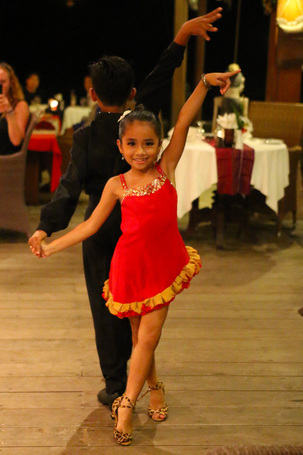 Travelling to Asia never fails to open my eyes, get my hips swaying and my toes wiggling. And what I happened upon recently, further confirms that itchy feet is a condition best left untreated. Come nightfall, in downtown Mataram (Lombok’s capital) a hall reverberates with the rhythm of young feet, healing through the power of their heels. Local children attend free dance classes courtesy of Dutch philanthropist, and retired professional ballroom and Latin dancer, Marcel De Rijk, who is also the owner of one of Lombok’s most revered boutique spa resorts: Puri Mas.  In an effort to nurture human and social capital, Marcel provides costumes and shoes at his international dance studio, where over the past couple of years, 120 disadvantaged children have tapped their toes and heels—for free. This is Marcel’s way of giving back to the local community, inspired by his lifelong passion for dance. As I left behind a quiet, darkened street, the dance floor lit with smiling eyes, swirling hips and trailing hair, delighting in the joy and freedom of movement. My eyes fixed, however, upon Ni Nyoman Ivana Maharani, an 9-year-old girl, joined on the dance floor by her 13-year-old brother, I Wayan Adipurana Sanjaya. So talented are these two that they dance for guests at The Ballroom Restaurant within Puri Mas Resort. I was lucky enough to catch this on my last night in Lombok. Their parents watched on, oozing with pride, as these two young talents burst into ballroom dancing one would only expect to see on the professional stage. I observed these young souls seamlessly bonding through their synchronised soles. Looking back across the Lombok Strait, dotted with traditional wooden jukung (outrigger fishing canoes), I felt touched by the common language that dance speaks across cultures, and by the dreams in the young dancers’ eyes.
 Irish supporters in a sea of green. Irish supporters in a sea of green. My day out last Sunday was not on the theme of travel, by the true sense of the word, but it was in essence a journey I’d never experienced before—to a live cricket match. Though if I’m to find a travel link, tenuously, if not amusingly, did you know that event ambassador, Shaun Tait, actually took the Cricket World Cup Trophy cage-diving with great white sharks off Port Lincoln recently? And I’m not codding ye there at all (yes, I fished hard for that pun—oh, and there goes another one!). I’m by no means a cricket aficionado, however I did gratefully accept a rare invitation to join Tourism Ireland to watch the Ireland vs Pakistan pool match during the ICC Cricket World Cup 2015 at The Adelaide Oval—from their corporate suite too. I mean… who wouldn’t? The fact alone that I’m half Irish means that my Roscommon and Meath-based family would drown me in a vat of poitín had I declined. The day turned out to be a thrill. Firstly, I crossed the River Torrens’ Riverbank Footbridge with a vibrant mix of smile-painted nationalities, flushing through like a healthy dose of colonic immigration. Arriving at the Fanzone on the oval’s Southern Plaza, I met with a group of Pakistani fans beating their drums, and an acrobat balancing upside down—on a fellow acrobat’s head! I’d witnessed similar shenanigans as a child, with the Irish side of my family during Guinness-fuelled nights in Castlerea pubs as I munched on Tayto crisps and hiccupped on red lemonade. So the day was sure to be good (to be sure!). Okay, so Australia were not playing on Sunday, but match fever was alive and batting. And Ireland had much to play for with St Patrick’s Day a mere 30 hours away. They hit a few boundaries, but not as frequently as I guess they’d hoped. Drama did climax during an appeal for Irish batsman William Porterfield to be called out. The sound bar projected on the review screen indicated contact, but it was so negligible that the umpire kept his decision to save Porterfield. The Pakistani supporters went from jubilation to disbelief… the luck of the Irish! And despite 140km/hour balls and a wicked spin by Shahid Afridi, Porterfield reached his half-century. Guitar riffs from U2 peppered the intervals and over-changes. Ireland kept losing batsmen, but Porterfield soldiered on, reaching 85 by the 30th over. From our side of the boundary, ears and tongues were equally stimulated as spinach, kumara and cheese frittatas and pecan chocolate brownies were circulated. At his dexterous century, Porterfield drew a standing ovation and eruptions of cheers from his Irish contingent. When he departed on 107 runs, Pakistan celebrated like it was a victory. 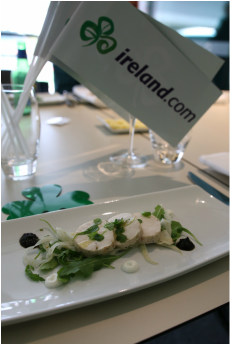 The sumptuous chicken roulade. The sumptuous chicken roulade. À la Carte dinner arrived to the corporate suite’s finely-dressed tables. Chinking to Annie’s Lane Clare Valley Riesling (I know!), a roulade of chicken with goats curd preceded a buffet of tastebud-firing dishes. I sampled both the roasted lamb noisettes with minted beans, and the grilled barramundi on polenta, of course, reserving a space for the mini gourmet cakes and macarons. Dinner conversation revolved around fearless John Mooney, who took a potentially dangerous cricket ball to the collarbone. He bravely took the pain, eventually brushing it off with an Aussie salute as if it were a bush fly. What a man! Then Pakistan started batting and turning the screw. But nearing 8pm, at 22 overs, the Irish cheered at their first wicket, brilliantly caught by Thompson, who kept steady hands despite the crowd’s suspended breath resting on his shoulders as the ball fell from the sky. On the 24th over, Pakistani captain, Misbah-ul-Haq ran himself out, knocking his stumps and sending the bails flying and flashing. Pakistan hit one boundary after another: Sarfraz Ahmed piled on the runs… and the pressure on Ireland. Ireland scored some consolation wickets to the playing of U2’s Desire… sending Pakistan into Vertigo! It all finished in the 46th over, leading to a flurry of Pakistani flag-waving.
So sadly, Ireland didn’t walk away a winner. But the win for me was a deeper understanding of Aussie sporting religion, and a crash-course in cricketing lingo. I now know: 1) that the players don’t actually physically field in slips; 2) that you don’t need Wi-Fi for a googly; and 3) why they rub their balls! Being appropriately educated in the terminology now, it’s thanks to Tourism Ireland from me for the opportunity, as cricket has certainly bowled this maiden over (I know, I’m sorry). So good luck to Pakistan on Friday, when they bat it out with Australia. I’m not sure if either team need to be wished luck. Or perhaps they both do? Sláinte! It’s that multicultural fiesta during Adelaide’s Mad March that makes your muscles ache like they’ve never ached before. It’s where your larynx discovers your lungs. It’s where your every orifice gets covered in dust. And where memories are moulded from emotions you never knew you could feel when a new band, often one you’ve never heard of before, becomes the number one play on your iPhone. Believe the hype - WOMADelaide is addictive! From the first: “One two…one two…,” mike test to epic performances by global bands, musicians, singers, dancers and performers – and from the inspirational Artists in Conversation and Planet Talks to chef-led Taste the World workshops, WOMADelaide 2015 was an around-the-world marathon in four days. And despite a record 95,000 electrically charged festivalgoers buzzing about Adelaide’s Botanic Park over the long weekend, the grounds never felt crowded. 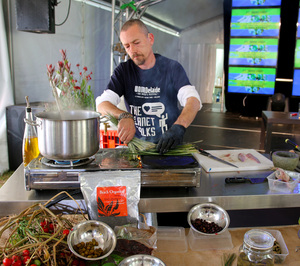 Simon Bryant cooks his Coorong mullet. Simon Bryant cooks his Coorong mullet. I joined the audience at the ‘How Sustainable is Your Diet?’ Planet Talks workshop. On the panel were: Dr Evangeline Mantzioris, UniSA’s expert in nutrition and Louisa Rose, winemaker at Yalumba (voted best winemaker in Australia). And cooking live was celebrity chef: Simon Bryant. Bryant cooked MSC-certified Coorong yellow-eye mullet and green beans with his homegrown tomatoes, local organic eggs, caperberries, Kangaroo Island salt and mountain pepper. Knobby club rush created a bed upon which he smoked the fish, which was finished in a desert lime dressing. “We can all do better when choosing our ingredients,” said Bryant, as the fish sizzled away. “Legumes and lentils are nitrogen-based, and are a cover crop, which is kind to the soil. And caperberries are grown in dried-out Murraylands. They actually grow in the worst conditions, so capers can do no wrong environmentally!” Bryant also asked us to be ethically aware when cooking with native foods. In some cases, despite us thinking we are doing the right thing by eating healthy, it can lead to uncontrolled harvesting. In 2013 quinoa hit a popularity high in the Western world, leading to a price spike in South America, rendering it unaffordable for many locals. Dr Mantzioris, said: “Both in terms of food nutrition and sustainability, it’s what you do for the majority of the time that counts.” She added: “Did you know that each cup of coffee we’ve enjoyed has used 150 litres of water during production!” The audience gasped in sync. Bryant then added: “What we buy is a political choice!” He advised us to limit animal source protein, especially beef, goat and lamb, which emit high levels of methane (cattle alone contribute 15% of global CO2 emissions: five times more than air travel, and twice that of the Internet). He reminded us that pigs and chickens are gentler on the land, as are olive and canola oil (cold-pressed only). And the take-home message from Bryant was: “Feel grateful for food. Enjoy it, but be responsible!” I took note and lunched at Jock Zonfrillo’s pop-up restaurant: ‘Street in the Park’. Zonfrillo runs Adelaide’s Orana and Street ADL restaurants. On his menu here were dishes inspired by street food of the countries that this year’s WOMAD artists hail from. I chose the Senegalese chicken mafé, stewed in mixed vegetables and spices, and garnished with a chicken’s foot (it’s all about being open-minded at WOMADelaide!).
Then there were the musical geniuses. I joined the blues-loving herds heading to a unique act. Lit by late afternoon sun, Australia’s quirkiest artist, C.W. Stoneking, swooned the crowd. He performed: On a Desert Isle, The Zombie, and Jungle Swing. It felt like America’s auld deep south, but on the shores of Hawaii! 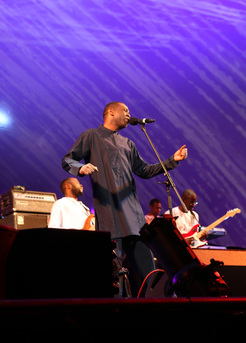 The voice of Africa: Youssou N'Dour. The voice of Africa: Youssou N'Dour. Youssou N’Dour and his band, Super Etoile de Dakar, sent shivers down every spine. And mania set in when Neneh Cherry joined him to sing the duo’s famous 1994 hit: 7 Seconds. I also claimed my spot for Traditional Irish band, The Gloaming. And the second that Martin Hayes put bow to fiddle, smiles as wide as the Emerald isle itself painted the audience. The group serenaded us through adagios and crescendos, with the virtuoso pianist, Thomas Bartlett, skilfully fluttering his keys, re-inventing the millennial music of Ireland for a contemporary market. Toes tapped, heads nodded and hands smacked knees throughout the seated performance. But it was Song 44, with lyrics heart-touchingly delivered by the silken voice of Iarla Ó Lionaird, that muted mouths and moistened eyes. Infectious joy and jubilation continued as I strolled between century-old Moreton Bay figs, eucalypts and pines in this most handsome park—until the clouds puffed over. There were pink clouds, blue clouds, green, yellow and orange, exploding in the air. I’d walked straight into Artonik’s The Colour of Time parade. A locomotive chain of people snaked through the grounds, dancing to celebrate a depiction of India’s Holi festival, throwing their coloured gulal powder to the wind, painting people and their clothes into graffiti-like artworks.
And keep a lookout online for my full article on WOMADelaide 2015, which will soon appear on Our Planet Travel.
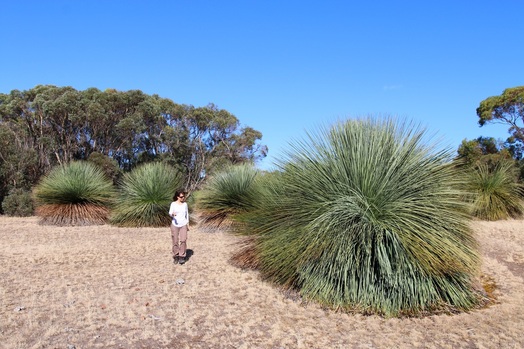 The explosive spheres of gorgeous grass trees. The explosive spheres of gorgeous grass trees. Ever since witnessing a neighbour’s cat being hit by a car, I’ve been highly sensitive to the welfare of animals and wildlife. It gave me recurring nightmares as a child, and I continue to be deeply affected by animals that suffer. I was 10 years old when I knocked on Nancy’s door that day, and through my innocent immaturity, wide-eyed and panicking, blurted out: “YOUR CAT IS DEAD!” (…how a writer wishes she could edit her words upon looking back!). After walking from her door and onto the road, Nancy’s shock turned to desperate sobbing, falling from her walking stick onto her rheumatoid knees, only to discover that ‘Tiggy’ was not actually dead yet, but in her last, twitching minutes. Nancy died a few weeks later. Since then, I have: returned a blind mole back to its burrow; carried a bloodied pigeon, in a never-to-be-white-again cardigan, to a local farm (both, when still living in England); helped return a young koala to its mother's back after it slipped and was hanging onto a branch by one claw; and while traversing Australia’s red dusty roads, pulled over to kangaroo roadkill to check the pouch for orphaned joeys. The latter, taught to me by the legendary wildlife welfare champion, Chris Barnes, AKA: Kangaroo Dundee, when I visited his kangaroo rescue sanctuary near Alice Springs (you can read up on this legend at: www.kangaroosanctuary.com). But it’s not all death and tragedy on my wildlife-infused travels. Recently, my husband treated me to a belated anniversary weekend at a rustic log cabin in the heart of Kangaroo Island. With both of us having demanding, time-consuming jobs, we booked only last minute, and brought with us no work or laptops. We were also refreshingly out of range (which would usually strike panic into my bones), so we went AWOL on our phones. From Eleanor River Homestead, an eco-friendly, isolated property on grounds pebble-dashed with mature native xanthorrheas, we took an evening stroll. The walk, needling between hundreds of these spherical, immaculately groomed grass trees (I’m sure they visit hairdressers!) down to the Eleanor River, provided excellent photograph opportunities for Kangaroo Island’s wild roos. But it was a photo opportunity of an unexpected kind that gate-crashed the scene. “G’day!” came a voice, and a waving hand. We waved back, approaching each other. The friendly farmer introduced himself as Graeme, and turned out to be the owner of the homestead we were staying in. He lived next door (‘next door’ being on an Australian scale, you understand – the two properties are out of sight of each other). Then, up went Graeme’s arm, and we ducked, as a nankeen kestrel missiled down to spear a piece of meat from Graeme’s (brave) fingers. 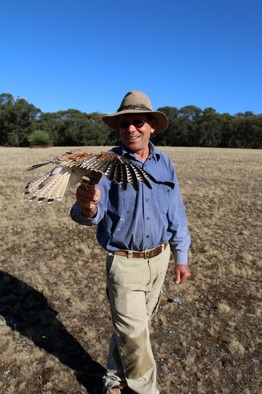 Graeme and Genie. Graeme and Genie. “This is Genie,” he said, introducing us to a feathered beauty, with attractive black polka dots and stripes upon honey brown plumage. Graeme Ricketts, a man of my own heart, nursed Genie (a rescued chick) back into the wild. She lives away now, as she should, but returns once a day for a treat—today, a slither of raw kangaroo meat. To read up on Genie’s remarkable life, and view videos of her chicks hatching, follow Graeme’s passionate blog: www.graemericketts.wordpress.com, about this gorgeous girl. Australians have a finely tuned passion for wildlife, which becomes evident as soon as you escape the day-to-day bustle of city life. But the passion is alive in the city too. The recent devastating bushfires that torched the outskirts of Adelaide were close to home for me. Only a day prior to the fires, I was at Gorge Wildlife Park enjoying their koalas. Within 24 hours, the free population of wild koalas, literally across the road, were tragically burnt by the fury of these destructive feats of nature. Luckily, I saw IFAW’s call-out for funds, so promptly donated money to help them supply rehabilitative care and cotton mittens for the burnt paws of our iconic koalas. Please join me and be generous to such organisations, many of which are volunteer-run, that provide respite and refuge for our endangered wildlife. So, for my fellow animal and wildlife lovers, until next time… 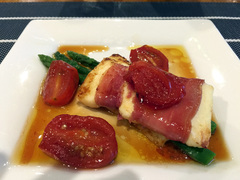 I remember vividly, as a child, clasping the hand of my mother, trudging the endless road of loose chippings back to my grandmother’s house during winter holidays in Ireland. It was Christmas, when blizzard-blasted evenings drew their dark icy cloaks over our half-frozen, sleet-chipped faces. Yet, it’s the colours that projected from those blackened nights that are most vivid in my childhood memories. I’d tiptoe up to peer over stone walls, gawping into cosy Irish living rooms, where open fires flickered and hot meals bubbled from turf-fuelled stoves. Oh, the envy, rising from our growling stomachs as the peeling soles of our sodden boots blotted up the melted snow, while our woollen coats pathetically performed their osmotic transfer of a Roscommon midwinter. But now I can write from the other side of the fence. Tonight, from Seascape Lodge, a timber fence dressed in lavender and native rosemary bushes encases what must be one of the cosiest luxury stays on Kangaroo Island. It’s midsummer, but chilly winds that howl outside justify the hearty free-range chicken roast that spills its flavours from the ovenware to our hungry plates. The next night we are treated, while dining with our hosts, to a starter of Island Pure halloumi cheese with prosciutto, and a main of local King George whiting in cider sauce, netted by a mango and avocado salad. And it gets better… with a chocolate and walnut lava pudding. Believe me, granny too would have been peering into this kitchen had she smelt such decadent a dessert! And the Poitín would have been happily traded for the more refined Bay of Shoals Moscato Riesling that pours into our glasses right now.  Seascape Lodge, owned and run by Mandy and Paul Brown, comes part of the two-day 4WD Kangaroo Island Wilderness Tours. And what a superb choice I made. After journeying through the island’s intriguing trails in search of adrenalin-fuelled activities, wary wildlife and quirky locals, peace and solitude comes in the form of a pristine room overlooking the arcing expanse of Emu Bay. The scent of fresh roses seeps from the bathroom, as maritime paintings by local artist, Neil Sheppard, dress the walls, almost releasing the smell of the sea crashing outside. Looking out from the inside… I like how that feels! “BULA!” from Fiji.
Finding a truly memorable massage can be a little hit-and-miss. And when you are a qualified masseuse yourself, as I am, you can be a quite spoilt through training and practice. I often inadvertently find myself, when under the palm, tracking every massage stroke, from effleurage to cupping, knowing the drill like the back of my hand—or front, as the case may be. Luckily, however, I can count on that hand, the forgettable massages. Perhaps that weary therapist had been on their feet all day and I was their last client (it is hard graft). At worst, they might have lacked that personal touch, steamrolling over your corrugated protuberances (my ribs being a fine example), like a 4WD on heat. But last night, I experienced what every Fijian highly recommends their visitors experience: the traditional Fijian Bobo Massage. Indeed, I shamelessly sighed my way through the transcendent hour of kneading and pummelling that splayed me out like an anesthetized manta ray. At Harmony Retreat, set within a mini moated island within Radisson Blu Resort on Denarau Island, Ima, a tall, glamorous beauty introduced herself in that soft, refined manner that Fijians do best. “Bula, Marie!” she began, leading me along a hibiscus-lined path to an alfresco three-walled hut screened with bamboo. Palm leaves fringed the roof on the open end, with sun dappling through the forest of palms ahead of the therapy bed. As soon as Ima laid her hands on me, I felt their power to heal. That may sound like a cliché, but take it from me; you know it when you get it. Using a nourishing blend of Pure Fiji cold-pressed nut oils, plants and flowers in a coconut base, her energised palms drizzled across my tense corners, crags and peaks like molten lava, her fingers reading my knots like braille. According to what my body was silently screaming out for, Ima alternated her palms, fingers, knuckles, elbows and forearms until I lay there, limp, as malleable as dough, and soothed by the gentle patter of rain and chitter-chatter of tropical birds. You just can’t beat swapping air-conditioning for ambient temperature, bathed in subtle humidity. If you pass through Denarau Island on your Fijian travels, do look up Ima at Harmony Retreat; she truly has the Midas touch: island-style. "Vinaka!" |
Archives
October 2022
Categories |
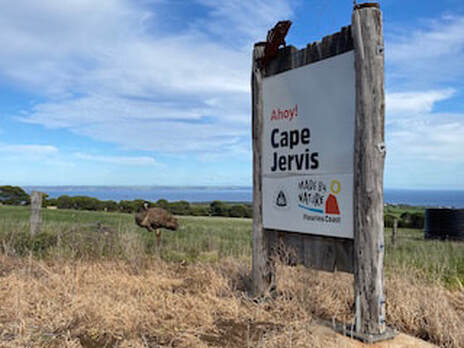

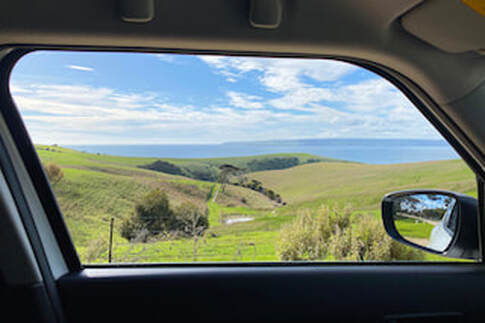
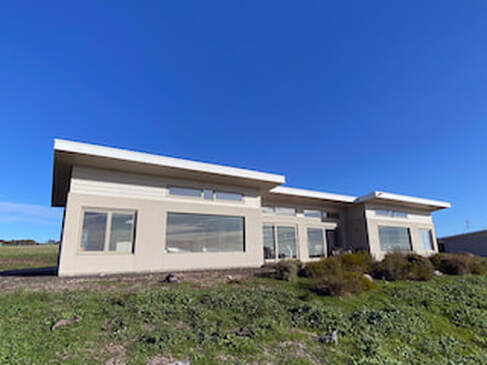
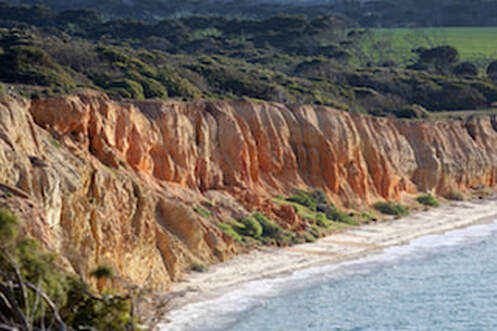

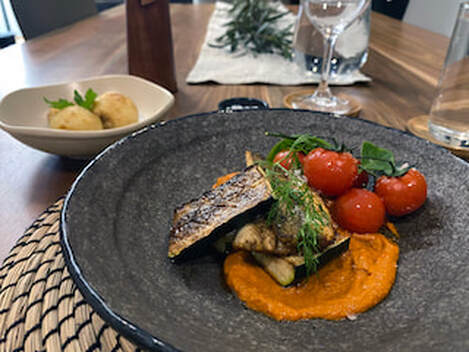



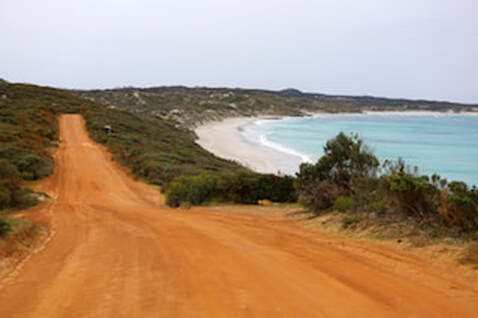
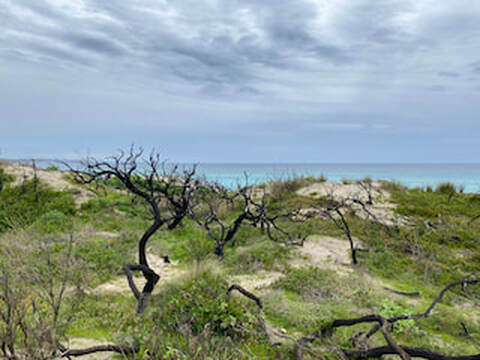
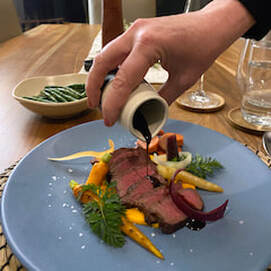
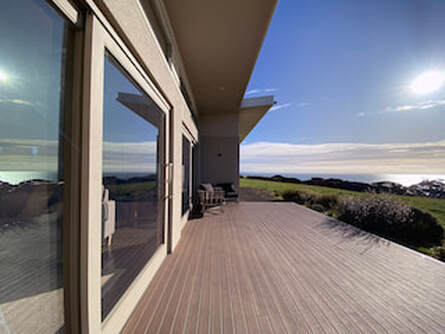
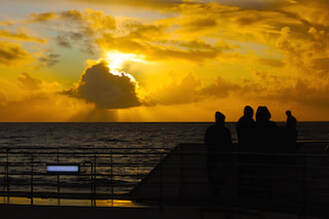
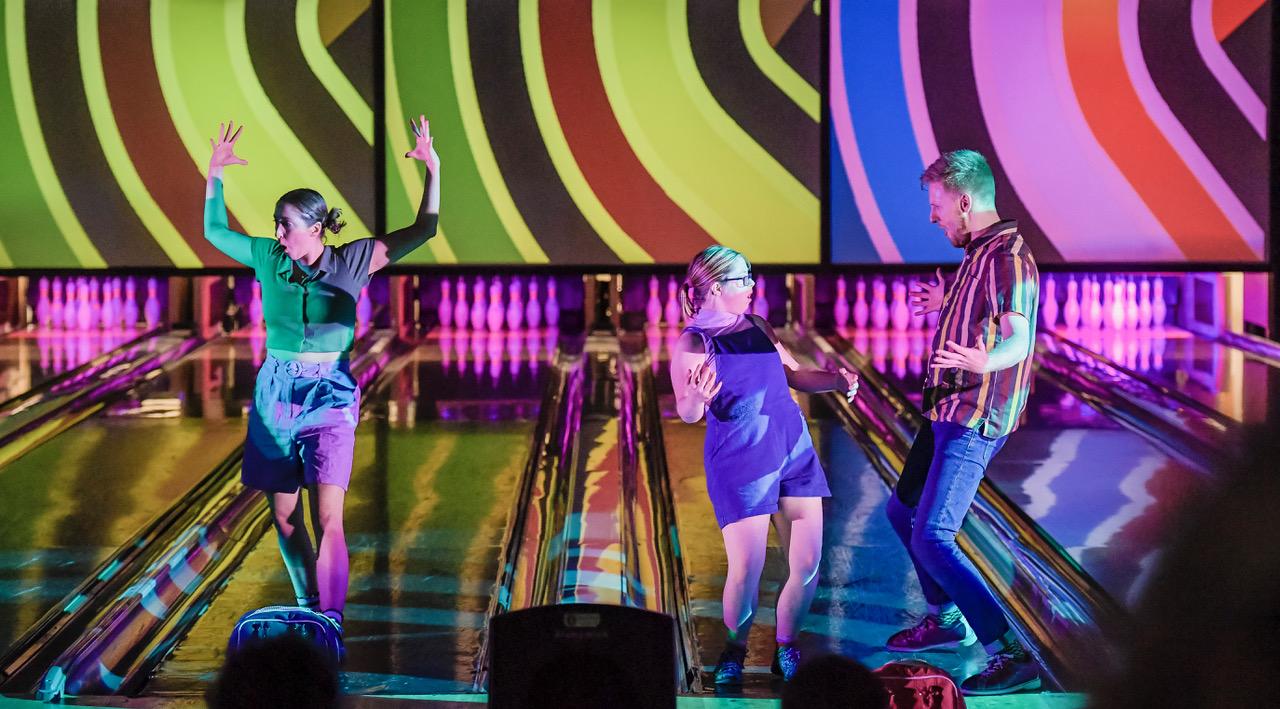
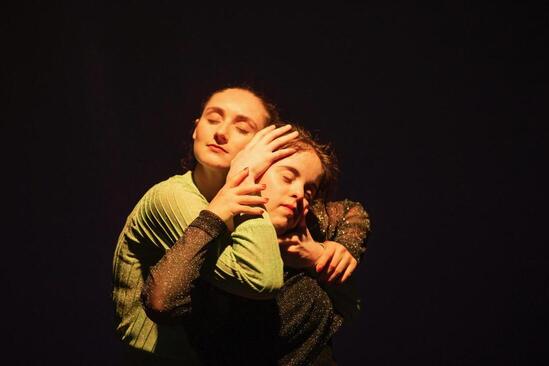
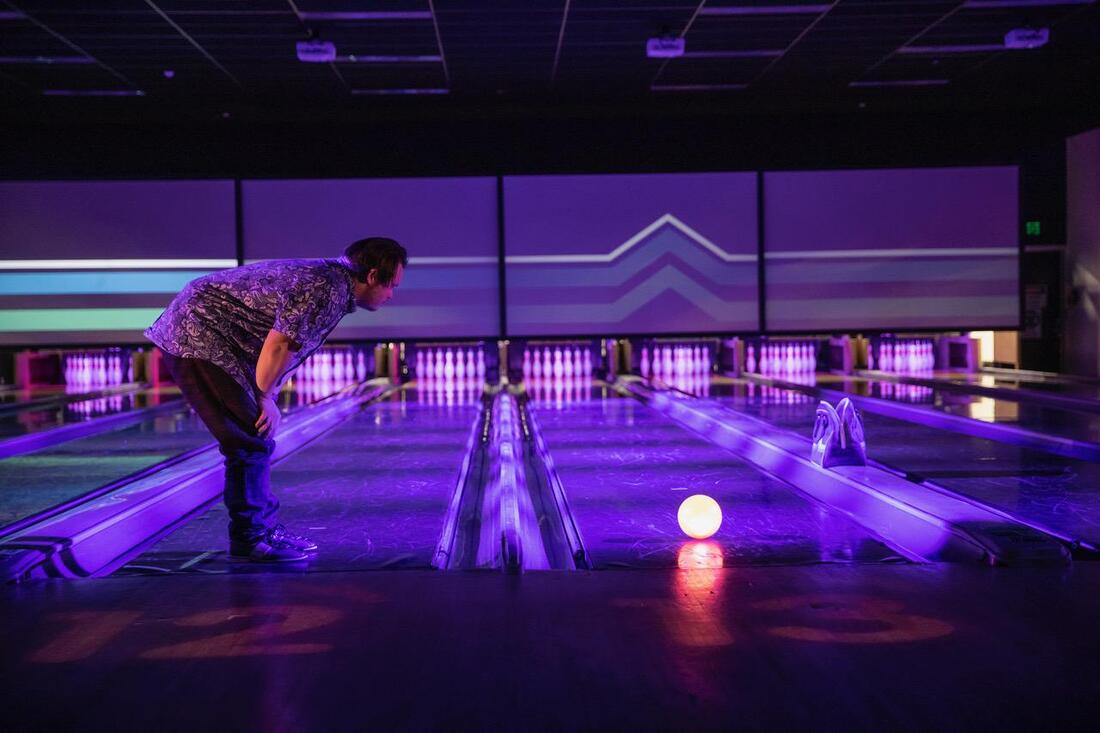
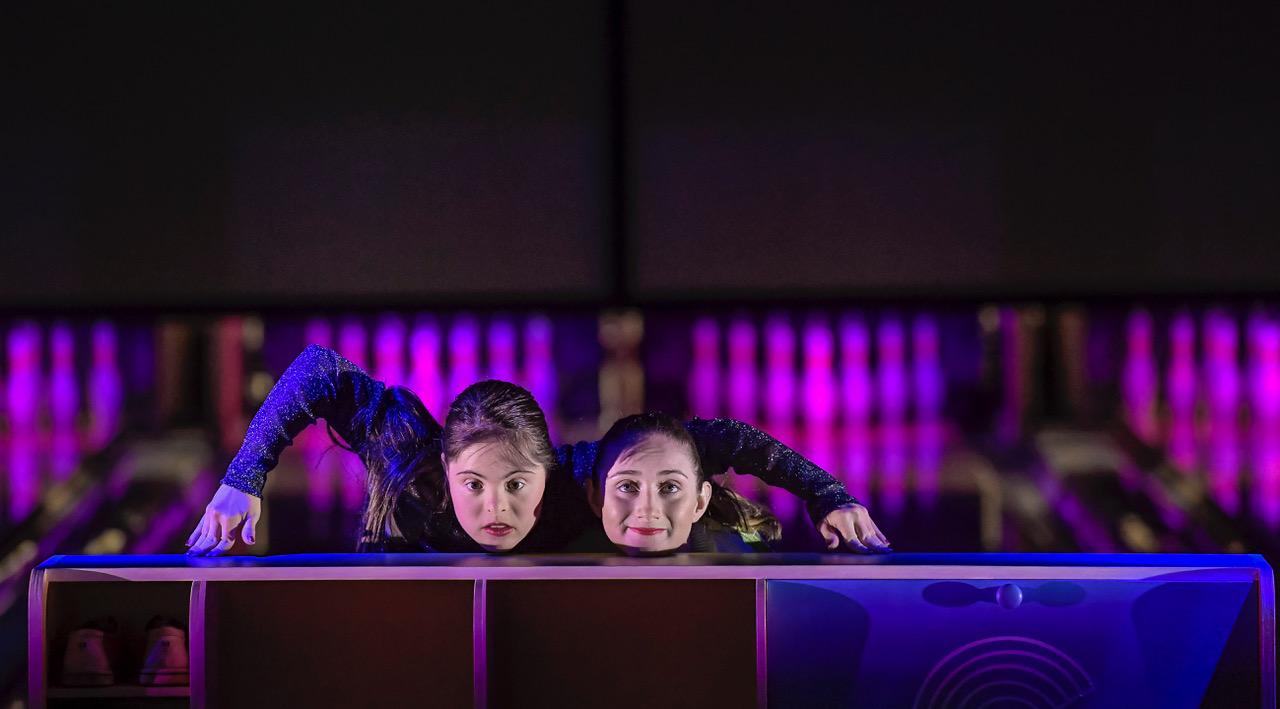

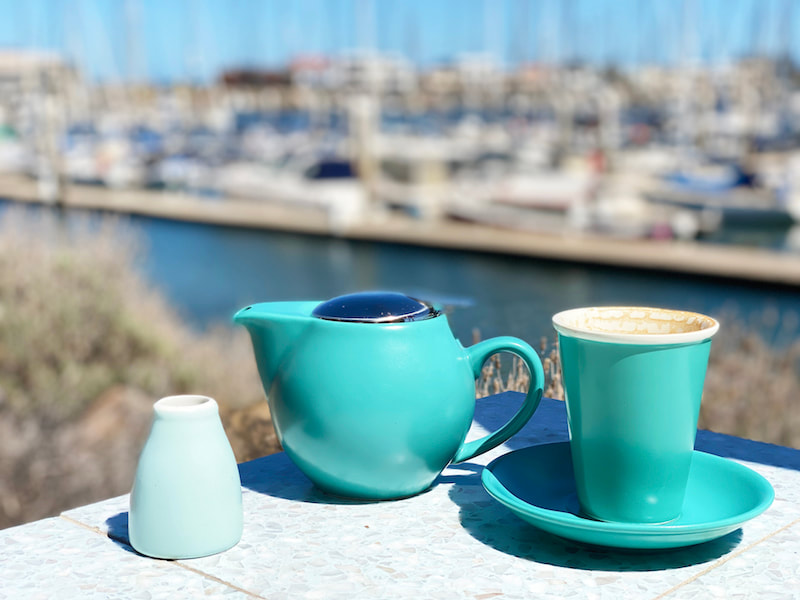
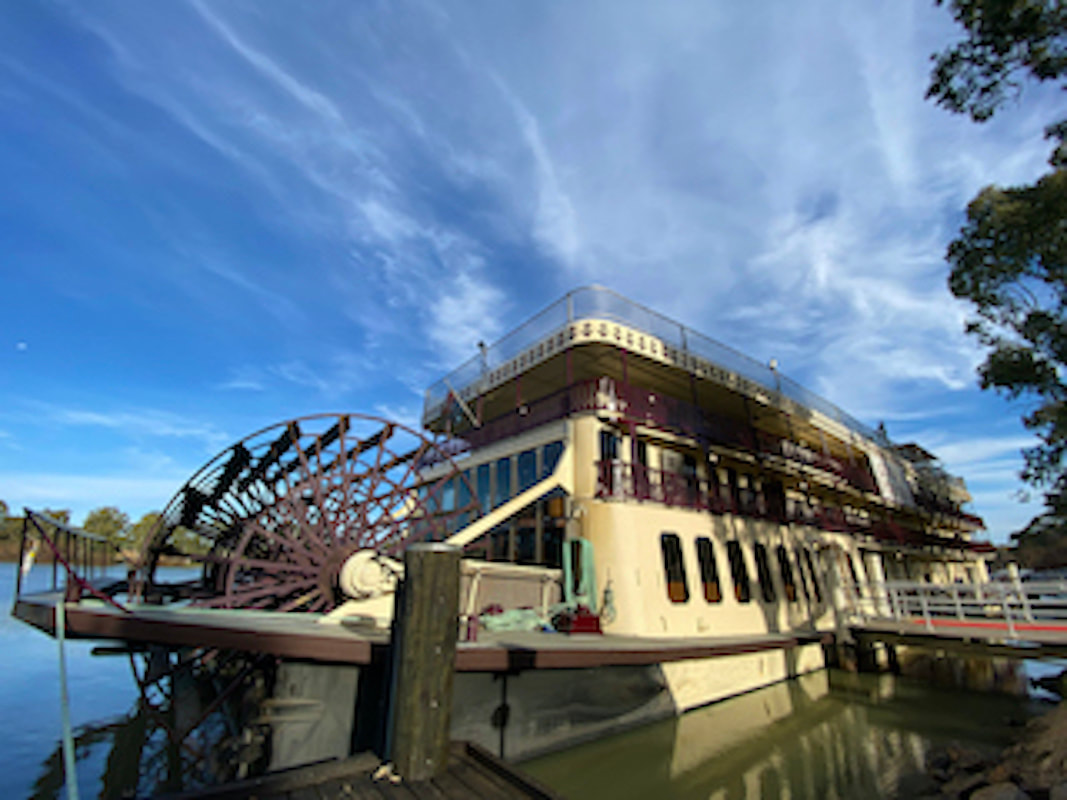

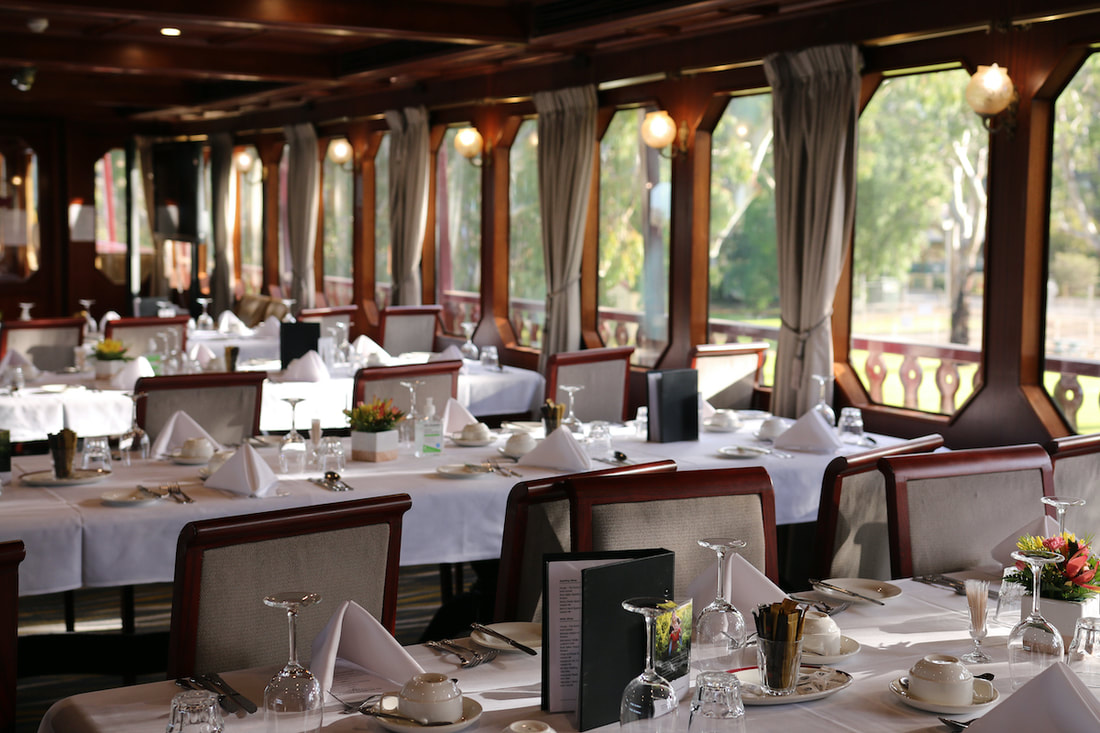

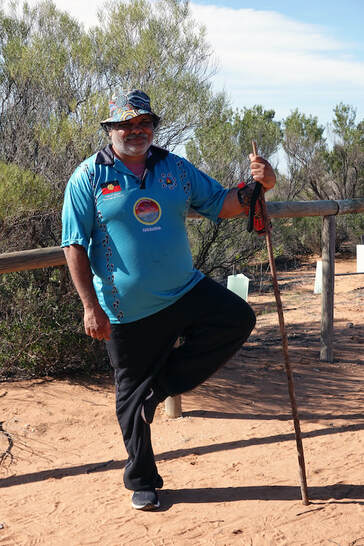
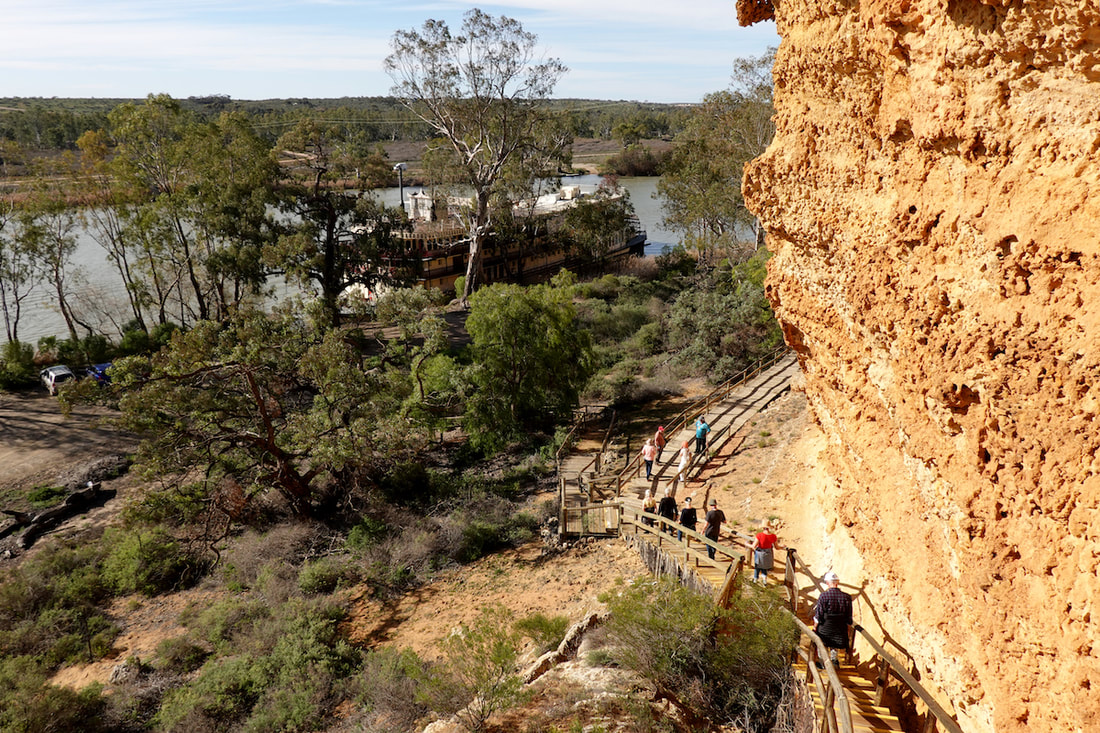
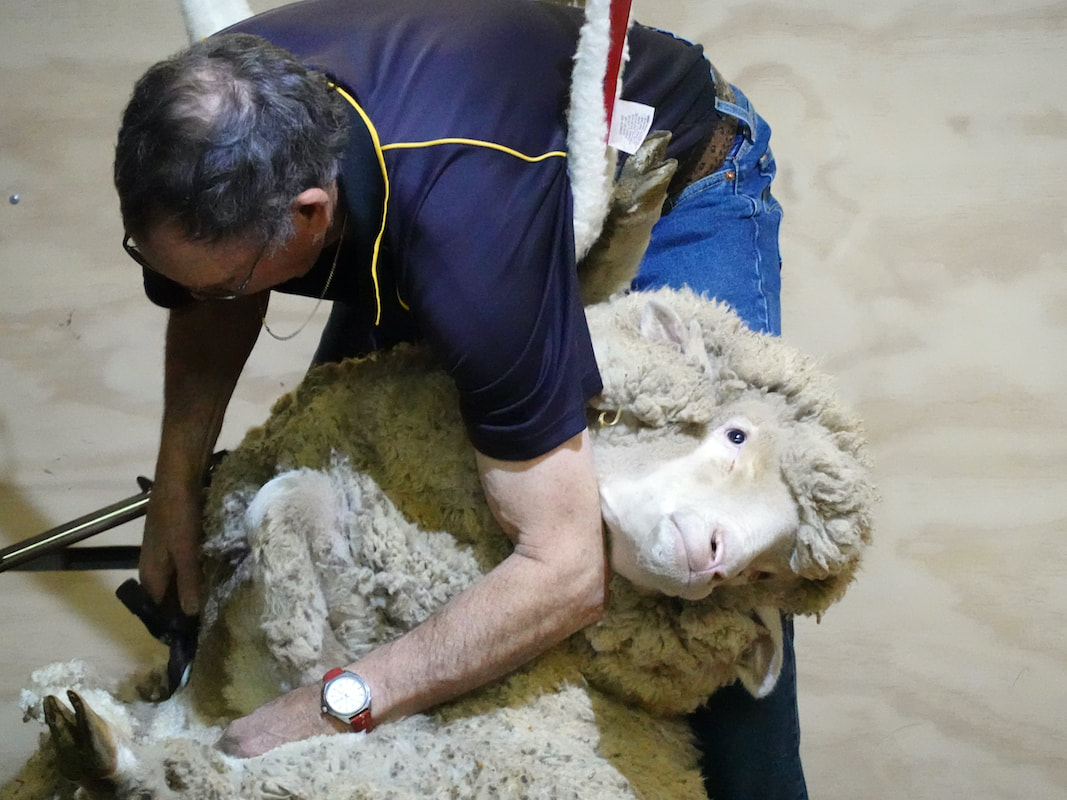
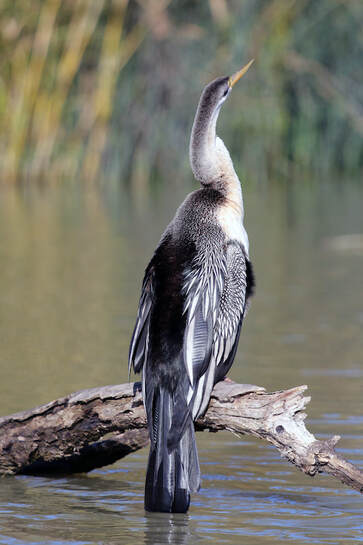

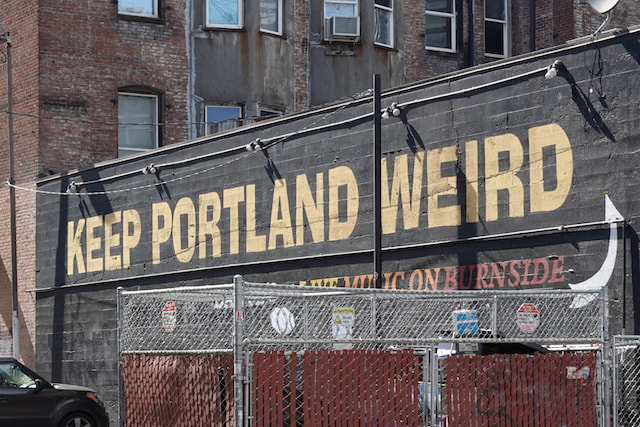
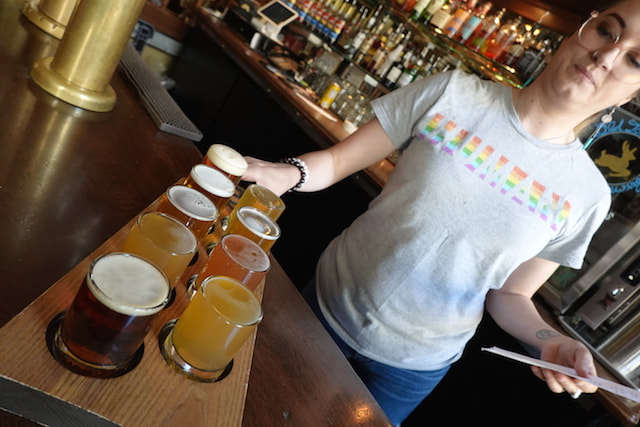
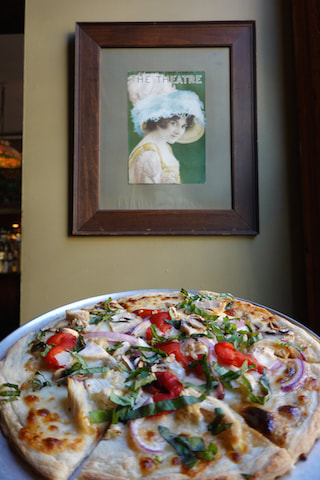
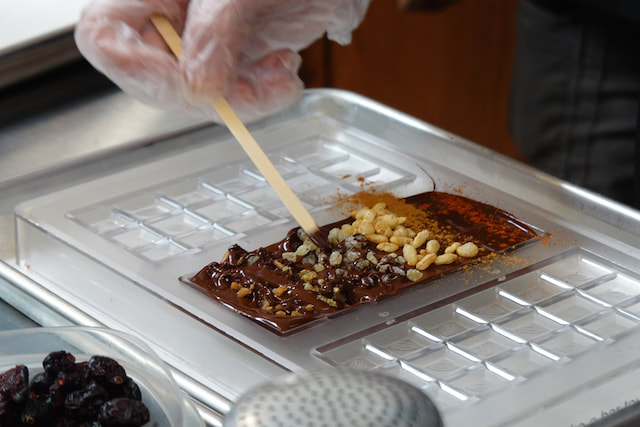
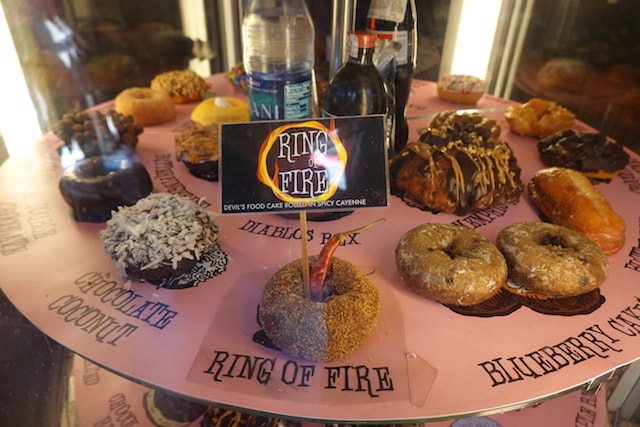
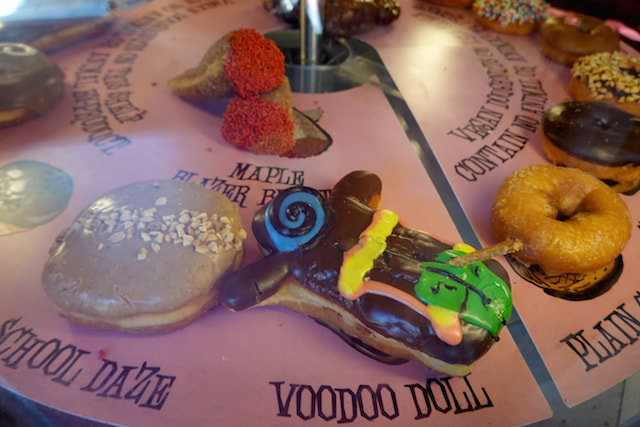
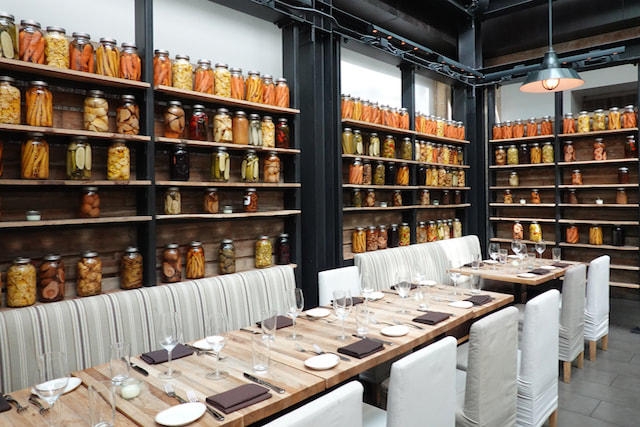
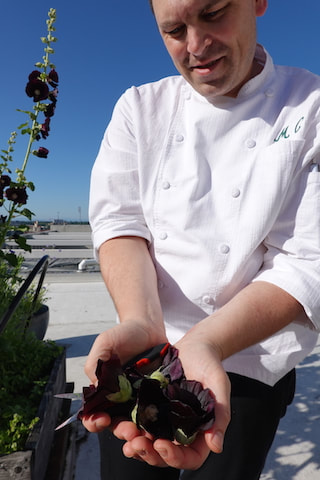
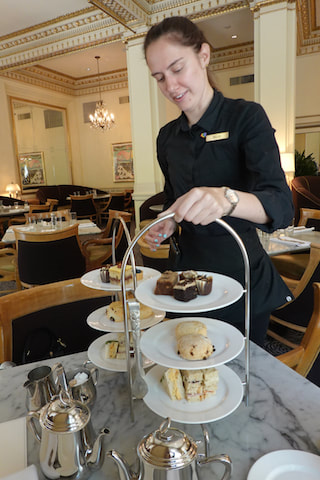

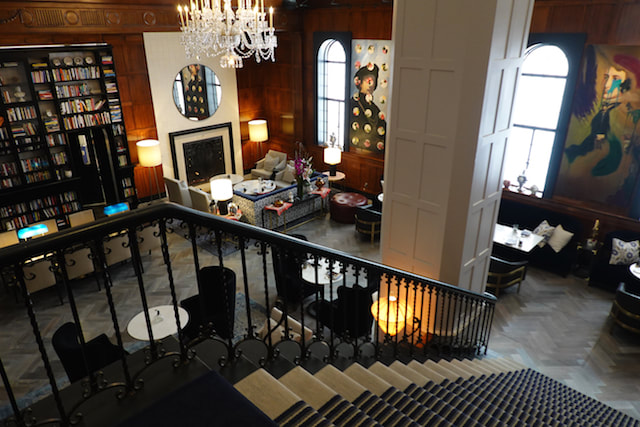
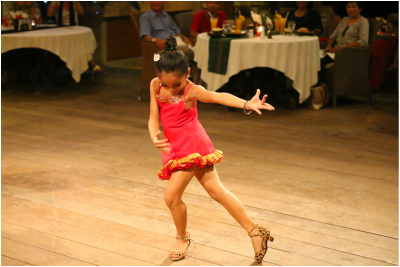
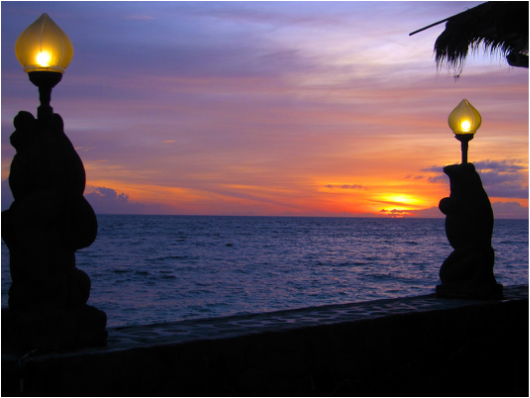
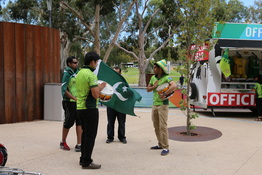



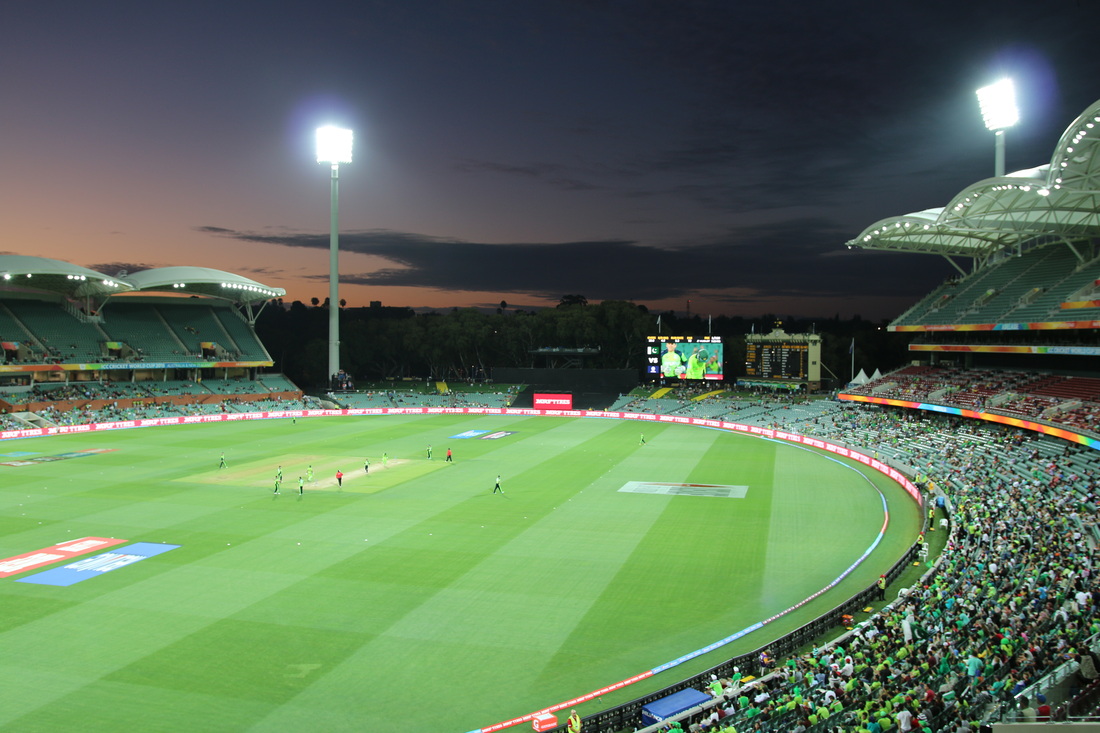
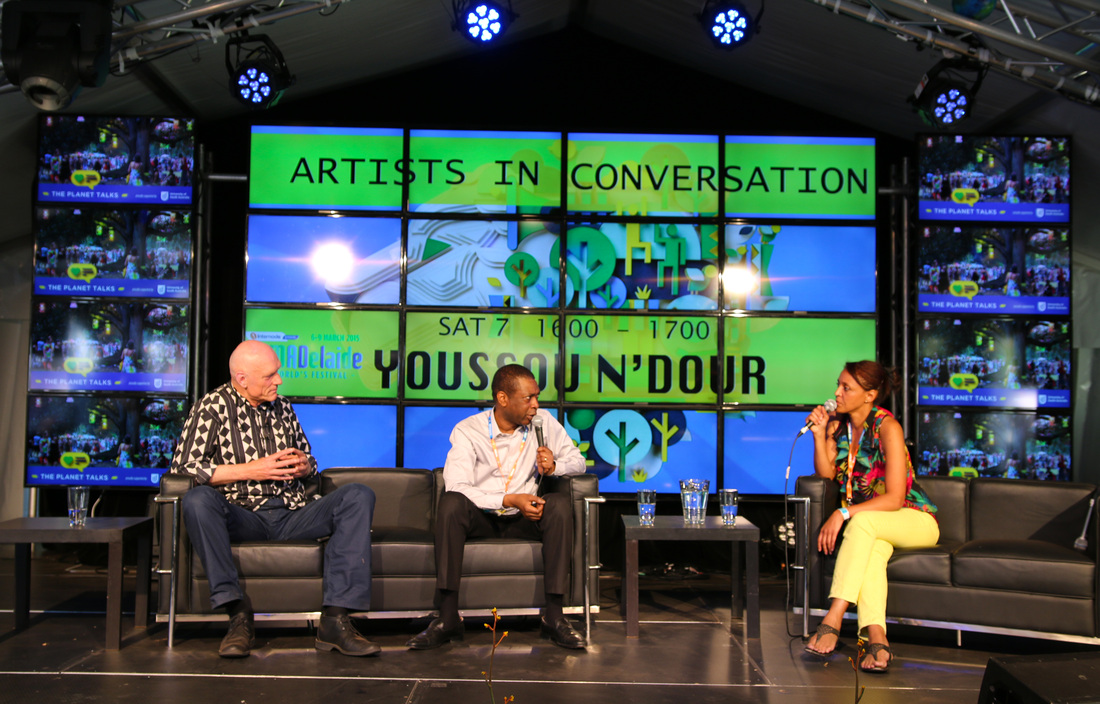
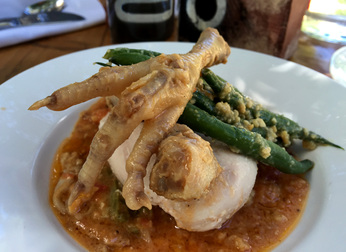
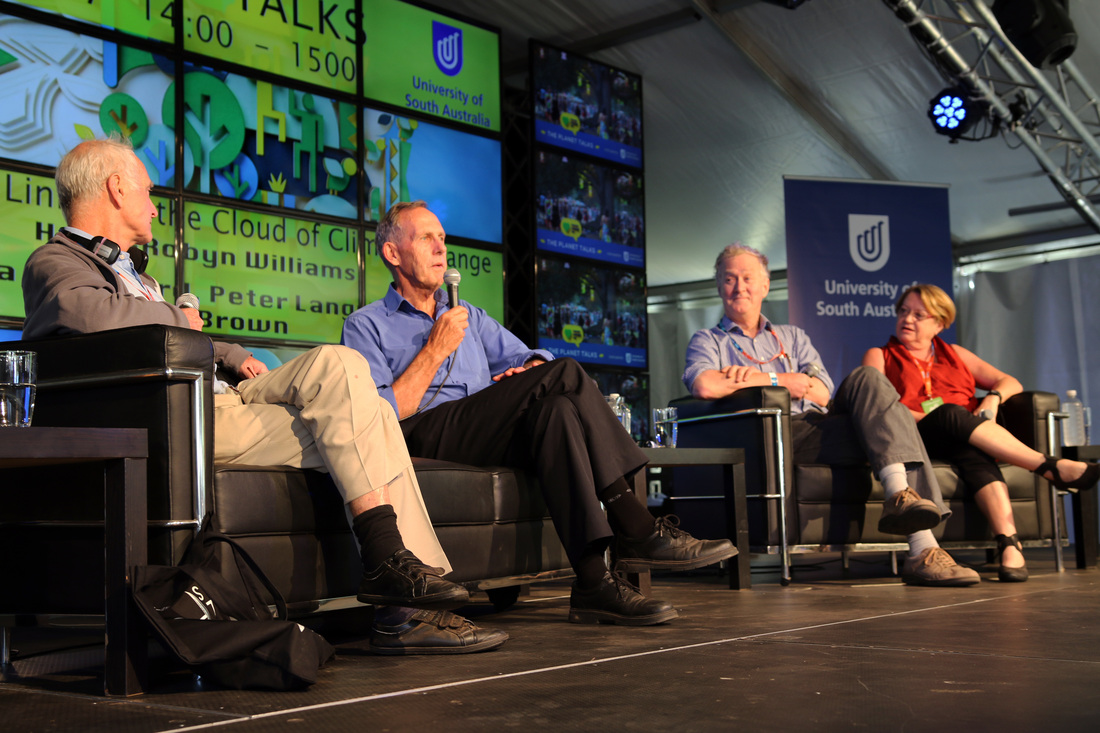
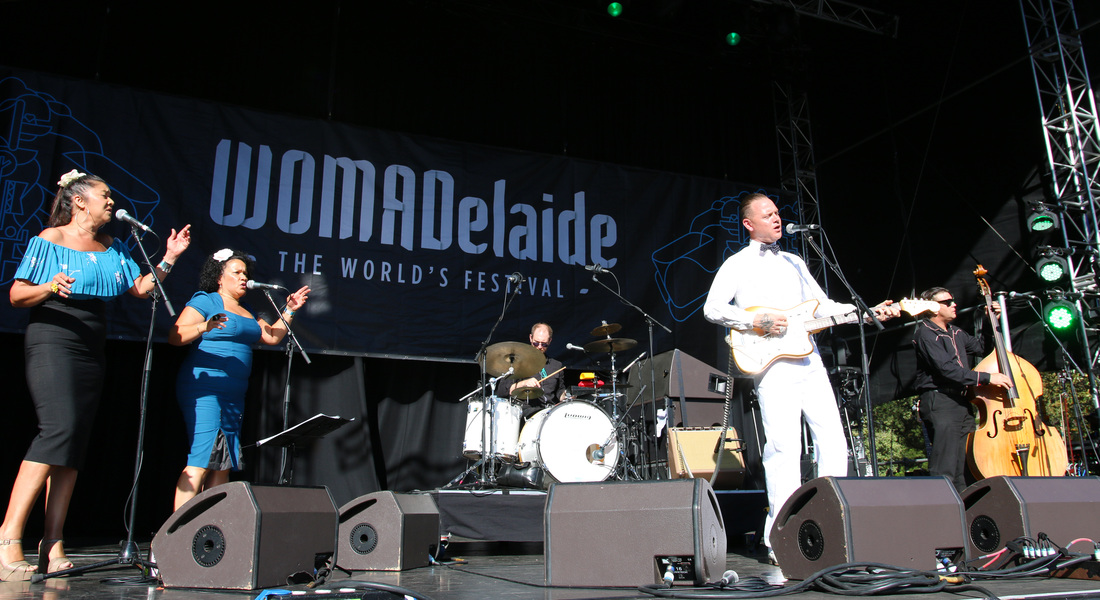
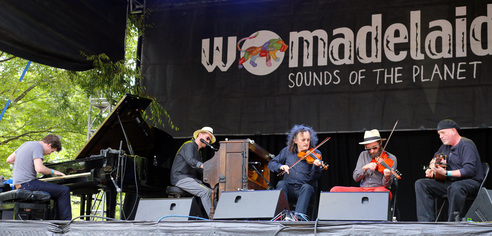
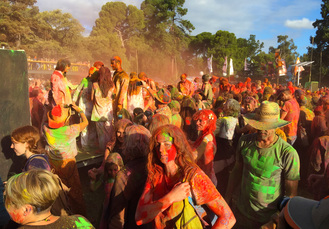
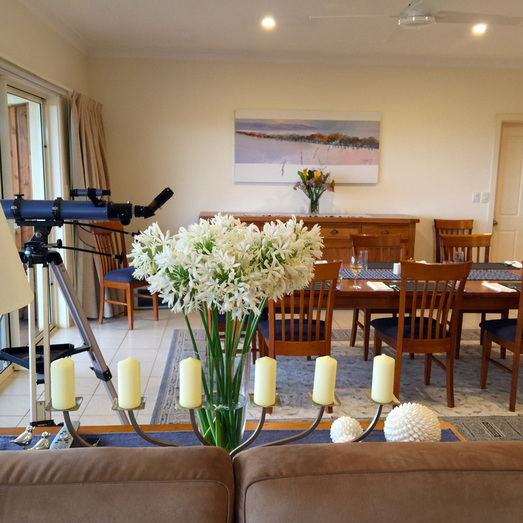

 RSS Feed
RSS Feed
